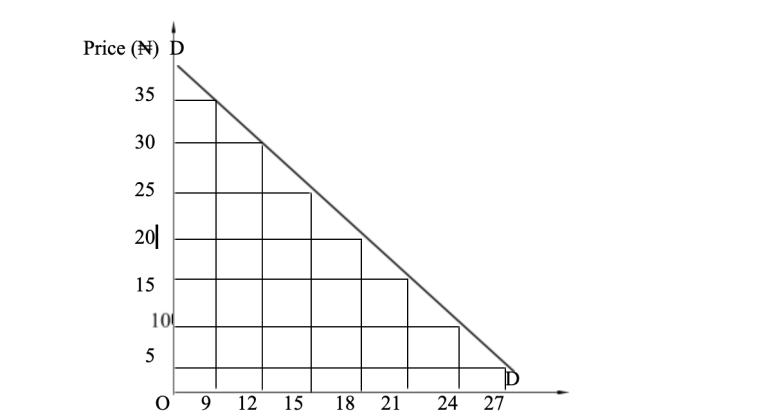Lesson Notes By Weeks and Term - Senior Secondary School 1
CONCEPT OF DEMAND
SUBJECT: ECONOMICS
CLASS: SS1
DATE:
TERM: 3RD TERM
REFERENCE BOOK
WEEK FIVE
CONCEPT OF DEMAND
CONTENT
DEFINITION OF DEMAND
Demand can be defined as the quantity of a commodity (goods and services) that consumers are willing and able to buy at a given price and at a particular place and time. Demand is quite different from wants, need or desire. ‘Effective Demand’ in economics must meet three conditions which are:
Demand must be related to price because to a great extent, price determines the quantity which consumers are willing to buy.
LAW OF DEMAND
The law of demand states that, all things being equal (Ceteris Paribus), ‘The higher the price, the lower the quantity of goods that will be demanded, or the lower the price, the higher the quantity of goods that will be demanded’. This law is often regarded as the first law of demand and supply. It simply means that when the price of a commodity, like yam for instance, is high in the market, very few quantity of it will be demanded by the consumers and vice-versa.
DEMAND SCHEDULE
It is a table of value showing the relationship between prices and quantity of that commodity demanded.
This is a table, which shows the magnitude of demand at various prices. That is, the different quantities of a commodity, which would be bought at various prices, at a particular time.
Example: The table below shows Mr. Tunde’s demand schedule for milk.
Price (â¦) Quantity Demanded (Tin)
35 9
30 12
25 15
20 18
15 21
10 24
5 27
From the table we can observe that as price changes the quantity of milk demanded also changes.
The total of the individual demand schedule gives the market or aggregate demand schedule.
DEMAND CURVE
The demand curve is the graphical representation of the information contained in the demand schedule. The price is plotted on the vertical axis and the quantity demanded is plotted on the horizontal axis. Normal demand curve slopes downwards from left to right. From Mr. Tunde’s demand schedule, a demand curve is drawn as follows.

Quantity Demanded
Both the demand schedule and the demand curve illustrate the law of demand which states that “the higher the price of a commodity, the lower the quantity demanded and vice versa.
EVALUATION
TYPES OF DEMAND
COMPLEMENTARY (JOINT) DEMAND: This is the demand that occurs when two or more goods are needed or required together at the same time by a consumer, eg tea and sugar, car and petrol. Increase in the demand for car will lead to increase in demand for petrol, vice-versa.
COMPETITIVE (SUBSTITUTE) DEMAND: This is the demand that occurs when two goods are close substitute and serve the same purpose. In this case, when there is an increase in the price of one commodity that has close substitute to another, its demand will fall as consumers will shift to the other close substitute goods with lower price and the demand for the close substitute goods will increase, eg fish and meat, tea and coffee, butter and margarine, pen and biro.
COMPOSITE DEMAND: This is the demand that occurs when the total demand for a single commodity will serve many useful purposes. For example, cocoa beans is demanded for making cocoa beverages, cocoa bread, cocoa wine and chocolate. Cassava is demanded for making foofoo, garri, starch and cassava powder (Elubo)
DERIVED DEMAND: This is the demand that occurs when the demand for a commodity is not for its immediate consumption but for the demand for another commodity. For example, there is a demand (derived) for flour to satisfy the demand for bread and cake.
FACTORS AFFECTING THE DEMAND FOR A COMMODITY
EXCEPTION TO THE LAW OF DEMAND
Exceptional or Abnormal Demand- is a demand pattern which does not abide by the law of demand, and therefore gives rise to the reverse of the basic law of demand which states that the higher the price, the lower the quantity demanded of a commodity, and vice-versa. In a case of abnormal demand, a higher price may mean a higher demand or no change in demand, while a lower price may mean a lower demand or no change in demand. Conditions for these exceptional cases are:
EVALUATION
READING ASSIGNMENT
Ampilified and Simpilied Economics for SSS by Femi Longe page 256-266.
GENERAL EVALUATION QUESTIONS
WEEKEND ASSIGNMENT
THEORY
© Lesson Notes All Rights Reserved 2023